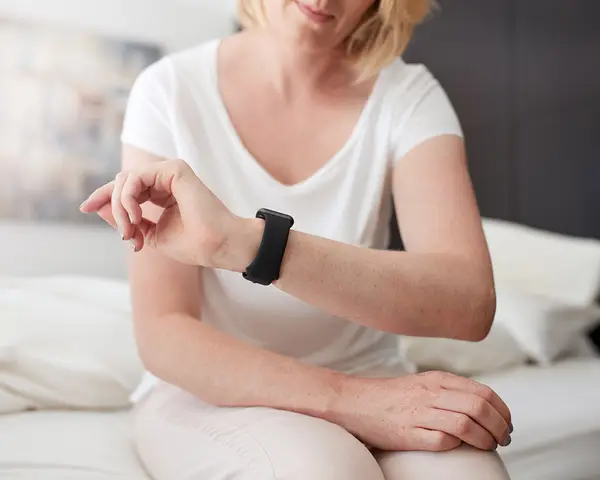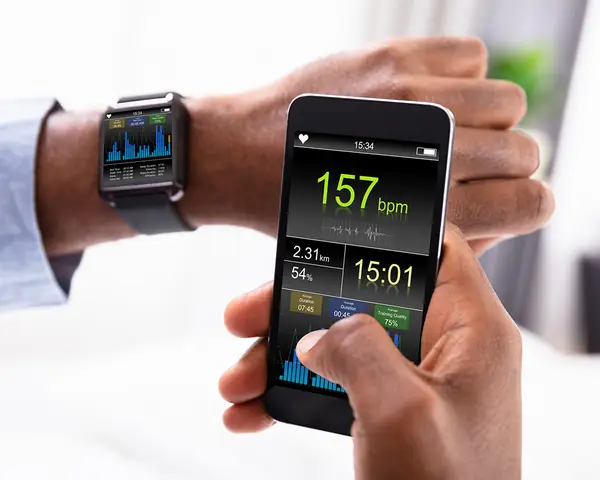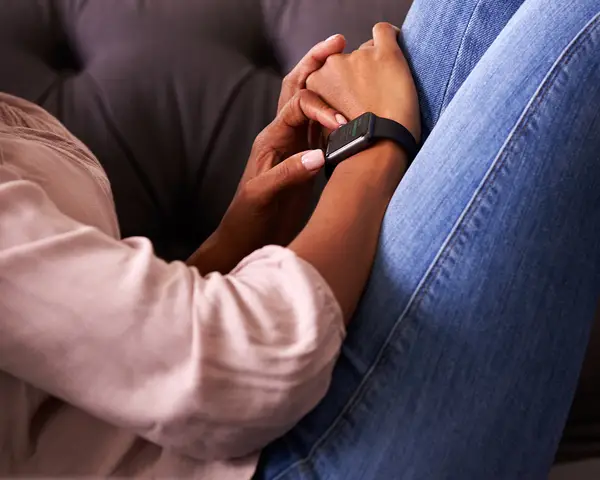Data collected from personal sensors can improve remote patient monitoring, enhance our pandemic response, and track secondary effects of COVID-19
The COVID-19 pandemic is accelerating digital transformation. Many American families are redefining what it means to be “essential employees,” as others transition into longer-term remote work. App-based home schooling is now the reality for millions of students. COVID-19 is forcing us to adapt and adopt digital technologies, seemingly overnight.
Patients and caregivers are also seeking access to health care in new ways. As my colleague Saira Haque, PhD, MHSA, has described, the federal government, health care organizations, and payers are making sweeping changes to reduce barriers to use telehealth.
Collection of survey data is also changing. As my colleague Charles Lau, PhD, has explained, researchers who are unable to collect data from study participants face-to-face must now consider alternatives, including distributed data collection using mobile surveys.
Telehealth and mobile survey data collection are not new concepts, but their acceptance and use has been accelerated in response to the COVID-19 pandemic.
RTI is pioneering the use of wearable sensors for clinical and public health interventions. Our researchers contribute to the foundational literature in digital health, focusing on devices’ validity and reliability, data acquisition methodology, and processing techniques. Recent innovations in consumer-grade technologies—including fitness trackers and smartwatches—have significantly bolstered the ability of individuals, clinicians, and researchers to understand and intervene in several aspects of personal and population health.
We use data collected from wearable devices to support three distinct research functions:
- Observation of physiological signals and health behaviors,
- Intervention based on sensor feedback, and
- Prediction of behaviors and disease development through pattern recognition.
We have demonstrated the value of wearables for monitoring population health indicators through the Centers for Disease Control and Prevention’s (CDC’s) Healthy Behavior Data Challenge. Our ongoing work for the Department of Justice is evaluating stress reduction interventions for police officers and offers new ways to characterize and understand chronic stress. RTI is also leading a project for the Defense Advanced Research Projects Agency to create a system to detect respiratory pandemics using personal sensor data.
Collecting wearables data via a large, distributed study requires a special system that can handle both pulling and parsing large amounts of high-dimensionality data while protecting our study participants. Earlier this year, we launched RTI’s Wearables Research and Analytic Platform (WRAP) to support the use of these technologies, streamlining and securing data collection and offering new ways to process these unique measures collected from RTI study participants.
We are now anticipating a similar, steep increase in the use of wearable devices for clinical and public health research, in the same way telehealth and mobile surveys have been fast-tracked. A recent publication in the Lancet demonstrates that even low-cost, consumer-grade devices can reveal a sustained increase in average resting heart rate that corresponds to rates of viral illness at the population level. Additional recent coverage of our project work on disease prediction serves to heighten interest in the potential for these technologies.
Four studies have launched in the past month that illustrate the transformative potential of wearables data collection specific to COVID-19.
The Scripps Translational Research Institute launched a study called DETECT, in which U.S. adults can join the study and allow their data to be collected using a Fitbit, Apple Watch, Amazfit, or Garmin Watch. Researchers will use these data to improve real-time surveillance of contagious respiratory illnesses to improve public health response to infectious disease outbreaks.
Wearable maker, Oura, has sponsored a research study called TemPredict with the University of California, San Francisco (UCSF) to determine if physiological data collected using the company’s smart ring can be combined with symptom survey responses to predict the onset of COVID-19 symptoms.
The Open Humans Foundation initiated the Quantified Flu study in which community members can contribute data from Fitbit or Oura devices for aggregation and distribution among trusted researchers for further analysis to identify predictive signals from wearable sensors.
Evidation Health launched a longitudinal survey to collect data from a large sample of U.S. adults across several dimensions, including COVID-19 knowledge, perceptions, and psychosocial effects. Participants can also contribute data from their connected wearable devices. In just 2 weeks, this study has already shown steep decreases in physical activity and increases in sleep time across the country (as people stay and work at home).
As these studies begin to yield results, we expect to see increases in the use of personal sensing across three major areas of clinical management and public health:

1. Remote patient monitoring / patient-generated health data in primary care
The estimated 133 million Americans with chronic diseases will require continued management during the COVID-19 pandemic. Recent changes in medical reimbursement include new Current Procedural Terminology (CPT) codes that enable providers to bill payers to assist patients in getting and setting up new wearable devices and to review data in making adjustments to their ongoing treatment. Increases in virtual visits using telehealth technologies are expected to drive greater interest in remote monitoring to help augment and tailor video visits.

2. Pandemic response / COVID-19 countermeasures
As shown in China, South Korea, and Israel, public health surveillance efforts have benefitted from the widespread adoption of smartphones, enabling active survey data collection, passive localization, and digital contact tracing. Based on the four studies we describe above, it is clear that wearables-based data collection will be a common feature of smartphone-based public health surveillance in the United States.

3. Secondary effects of COVID-19
We do not yet know what the long-term psychological effects of prolonged social distancing, familial and occupational stressors, and economic hardships due to the pandemic response will be. Disruption to our routines, especially reduced physical activity and changes in sleep quality, will produce both psychological and physical consequences that can be objectively measured with wearables.
As we enter a new month and prepare for what lies ahead, there are many reasons to believe that we are on the verge of an accelerated digital transformation in delivering individual health services and the widespread acceptance of novel sensor data in public health. Previously considered high-risk, these novel approaches take on new importance and broader acceptance. The adoption of wearable sensor data seems to illustrate yet another human change driven by our need to adapt and survive.

About the Author
Robert Furberg, MBA, PhD
Dr. Furberg studies how emerging technologies, including smartphone apps and wearable devices, can be used to support clinical and public health interventions. For over 15 years, he has led interdisciplinary research and development teams at RTI to implement and evaluate digital interventions for health promotion, primary and secondary disease prevention, and treatment adherence across a variety of patient populations.

